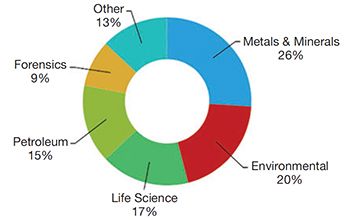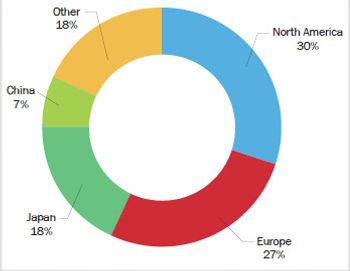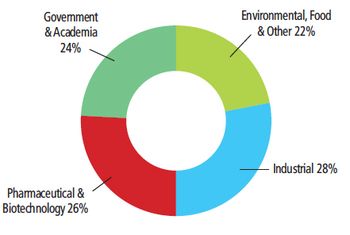
- Spectroscopy-03-01-2007
- Volume 22
- Issue 3
Market Profile: Raman Spectroscopy for Security Applications
Raman is a category of molecular spectroscopy that has achieved widespread commercial development over the past decade or so for laboratory applications. However, such technological development has helped to make Raman into a viable analytical technology for other applications, such as in the security market. Although this market is only in its infancy, it is expected to see very rapid growth.
Raman is a category of molecular spectroscopy that has achieved widespread commercial development over the past decade or so for laboratory applications. However, such technological development has helped to make Raman into a viable analytical technology for other applications, such as in the security market. Although this market is only in its infancy, it is expected to see very rapid growth.
Until recently, Raman spectroscopy had been relegated to a novel molecular spectroscopy method with little application due to the inability of technology to reduce the fluorescence effect that can overwhelm the relatively weak Raman signal. Major improvements in optics and electronics have not only made Raman spectroscopy a viable commercial laboratory technique, but also are allowing Raman spectroscopy to be developed for security applications in the form of compact and handheld instruments.
There are only a handful of vendors that currently manufacture Raman-based security instrumentation, including Smiths Detection and Ahura. Smiths Detection is one of the leading security instrumentation vendors in the world, and is the clear leader in spectroscopic security instrumentation. Ahura, on the other hand, is a young start-up company that specializes in handheld Raman instrumentation for security applications, but has been rapidly establishing itself as the front-runner in this market.
The worldwide security market for Raman in 2005 was worth only about $10 million. However, its inherent selectivity, its ability to specifically identify numerous organic and inorganic compounds, and its ease of analysis and use have helped to create a fairly large potential for this market. As police, emergency workers, airport screening organizations, and other security professionals discover Raman-based security instruments, the market should grow rapidly, estimated to triple by 2010.
The foregoing data were extracted from SDi's market analysis and perspectives report entitled Analytical Instrumentation for Security Applications, May 2006. For more information, contact Stuart Press, Senior Consultant, Strategic Directions International, Inc., 6242 Westchester Parkway Suite 100, Los Angeles, CA 90045, (310) 641-4982, fax: (310) 641-8851,
Articles in this issue
almost 19 years ago
Spectroscopy: Still Important and Surprisingly Robustalmost 19 years ago
2007 Salary Surveyalmost 19 years ago
The Electromagnetic Spectrum: A Historyalmost 19 years ago
SIFT-MS: Gas-Phase Chemistry - MS with a Differencealmost 19 years ago
Product ResourcesNewsletter
Get essential updates on the latest spectroscopy technologies, regulatory standards, and best practices—subscribe today to Spectroscopy.




